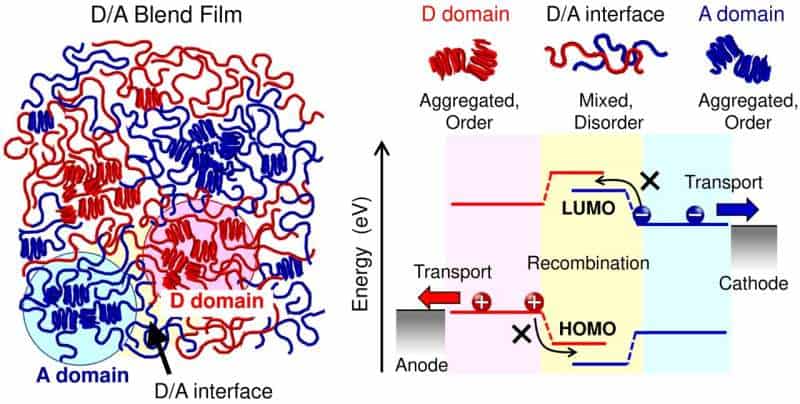Solar cells are an important contributor to a renewable energy supply, but solar panel waste will quickly become an enormous problem. Now, in a study recently published in Journal of Materials Chemistry A, researchers from Nara Institute of Science and Technology (NAIST) have investigated the science that might help improve the utility of easily mass-producible, all-polymer-based solar cells.
Globally, approximately one-third of electricity currently comes from renewable sources. Silicon-based solar cells are the major contributor, but there’s an increasing problem: what to do with the panels after their 30-year lifetime. A May 2022 article in Chemical & Engineering News lays out the problem: even when facilities recycle the frames and covers of the panels, the most valuable or even toxic elements are simply disposed. With a forecasted 80 million metric tons of solar panel waste to have been produced by 2050, this is a massive waste problem.
Polymer-based solar cells are a possible, less-wasteful solution. Such panels are thin and flexible, and thus are in principle quite versatile. Nevertheless, they have certain problems; e.g., a lower power conversion efficiency than silicon. “This efficiency is substantially limited by the fill factors: commonly less than 60%, even in advanced devices,” says corresponding author Hiroaki Benten of Nara Institute of Science and Technology. “The science that underpins the limited efficiency of all-polymer blend solar cells remains insufficiently unexplored.”
A ground-breaking result of this research is the high fill factor: 70%, which remained 60% even for polymer films several hundred nanometers thick. Competing polymer technology exhibits a 40% fill factor at this thickness. This is because bimolecular recombination of free electrons with free holes substantially inhibited the fill factor prior work, but was suppressed in the current study.
What suppressed bimolecular recombination within the polymer blends? “There was substantial charge delocalization in the donor and acceptor domains,” explains Masakazu Nakamura, senior author. “Appropriate aggregation of the polymer donors and acceptors led to a substantially ordered local structure of the polymer, which helped keep the separation of the electrons from the holes.”
Even if researchers completely solve the efficiency problem of all-polymer solar cells, they’ll still need to improve on the 10-year service life of the most advanced research prototypes. Additional research efforts include optimizing the film morphology, and even developing hybrid polymer/silicon solar cells, to optimize energy collection and efficiency. In the coming years, solar cells might look and function completely different from—and better than—modern technology.

